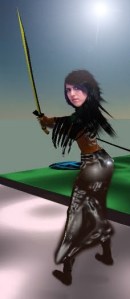State of the Union
January, 2020
Mister Speaker, Madam Vice President, members of Congress, distinguished guests, and fellow Americans:
Presidents have come before Congress for 230 years, in times of war, prosperity and, now, Singularity. It is fitting that we look back, briefly, on past times of strife and struggle. Not so long ago this mighty nation was on the brink of ruin, faced with ballooning deficits and ever increasing costs for medical entitlements and social security payments.
Now, thanks to the wise actions of this legislative body, those old days of tribulation are behind us and our union is stronger than ever before. This year, rather than stop smoking or lose weight, millions of Americans are free, freer than ever before, to continue making selfish and short-sighted decisions. Tonight we can celebrate the source of our new found freedom: the Singularity.
Our faith in the Singularity allows us to have confidence in the cryogenic preservation of our sickly and dying patriots who volunteer for immortality. Rather than burden their fellow citizens with the cost of their medical care, this year alone, a record 7.3 million Americans were reversibly frozen. (Applause) These singular patriots have truly achieved the best of both worlds. While in this world they were free to enjoy the pleasures of self-indulgent excess and the hyper-consumptive lifestyle. And in the future post-Singularity world they will enjoy miraculous wonders that we can only imagine in science fiction stories and binding cryopreservation contracts.
However, our work is not yet done. I now call upon congress to increase the government incentive that is paid to our good citizens who volunteer for cryonic life-extension and the guarantee that they will live in post-Singularity America. Although the great visionaries of the Singularity assure us that post-Singularity America is never more than 30 years in the future, many Americans wisely take no chance and have themselves frozen now. Our great patriotic motto is: why wait? It is wise to have yourself frozen before your lung tumors swell or your neurodegeneration proceeds very far. I say, save what is left of your youth for your wonderful life in post-Singularity America! (Applause)
As convincing as that argument is, some of our sick and dying citizens still balk and hesitate. Of course, we know what truly motivates Americans. We are a nation where logic has always taken the back seat to free market forces. Therefore, I am sending legislation to the Hill, proposing that current medicare and social security recipients be paid a lump sum $32,000,000 benefit, compounded at a 45% annual interest rate, to be paid in full when these cryogenically preserved patriots resume their lives in post-Singularity America. Our goal is to make medicare and social security entirely virtual entitlements that will only ever be paid out in post-Singularity America. (Applause)
I also call upon both the House and the Senate to extend the Avatar Science Tax Incentive. We need to continue to provide this incentive to Hollywood for the creation of more fictional and uncritical accounts of miraculous future technologies that will satisfy, or at least seem to satisfy, the quest for mind transfer and our dreams of eternal life. (Applause)
My fellow Americans, what does all this mean for you? Nothing less than eternal life in a future age of miraculous wealth and personal luxury! Contact your representatives today and demand that they give you what you deserve. Now is the time to demand your own piece of the American pie. Think of what has been learned from the great visionaries like Bernard Madoff and demand your $32,000,000, compounded at a 45% annually! (Applause)
We have come through a difficult decade. But a new dawn is perpetually upon the horizon. A new decade stretches before us where the Singularity will again be dangled just beyond our grasp. We won’t quit. We will seize the opportunity afforded by the dream of Singularity! (Applause) Let’s seize this moment to carry the dream forward and strengthen our union once more.
Thank you. God bless you. God bless the United States of America. And God bless the Singularity! (Applause)



